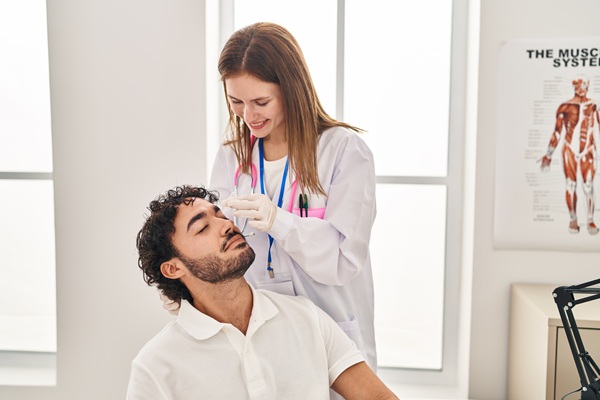When To See an Eye Doctor

Eye doctors or optometrists can do so much more than create prescriptions for vision correction. They can identify underlying health issues contributing to vision issues as well as prevent, treat, and manage eye conditions. Though you may not see one annually, it is a good idea to keep a relationship with this eye specialist for various reasons. Here are 10 reasons why you may need to schedule an appointment.
Blind spots
Everyone has a specific spot in both eyes that is absent of photoreceptors, which causes blind spots. However, when this blind spot becomes large, or there are more spots than normal, it is time to see the eye doctor. Such occurrences can indicate underlying diseases affecting the eyes or other organs in the body.
Blurred vision
Blurred vision is perhaps the most common reason for visiting an eye doctor. It is also the primary indicator of an underlying medical condition, such as diabetes. Note that it is normal for the eyes to need time to adjust in certain situations, such as when first waking up or moving from a dark room to the light. However, a patient must not wait to schedule a visit when they experience prolonged or more frequent bouts of blurriness.
Constantly watering eyes
Everyone's eyes should water occasionally, whether due to emotions or a protective mechanism to remove foreign objects or debris from the eyeball. When they water in excess or at random, it is usually a result of allergies. However, it can also indicate the eyes are trying to overcompensate for the lack of oil in the tear ducts. This can be uncomfortable and irritating for patients when they constantly have to wipe their eyes, especially for those who want to wear makeup.
Discomfort while using digital screens
Staring at screens all day is sometimes unavoidable, especially if it is necessary for employment. However, doing so can damage the eyes and cause significant discomfort. In fact, a condition called computer vision syndrome is on the rise. According to the Optometrist Network, indicators of this condition are eye strain, low blinking rates, and accelerated myopia in children.
Double vision
If a patient experiences double vision seemingly out of nowhere, they need to schedule an appointment with an eye doctor immediately. Such vision changes are typically a result of trauma or tumors. However, they can also result in less serious eye-specific conditions such as astigmatism or keratoconus.
Dry eye
If the eyes constantly feel like sand, gritty, or dry, then the patient may have dry eye syndrome. Usually, patients try to cure this condition with over-the-counter treatments. Unfortunately, these simply pacify the symptoms, not target the core issue. An eye doctor can pinpoint the cause and develop a treatment plan to eliminate or cure it.
Eye pain
Pain around or inside the eye is abnormal, no matter the circumstance. If it does not stem from trauma and appears suddenly, it can possibly result from eye conditions such as glaucoma, ocular migraines, ocular tumors, or irritants from outside sources. Either way, it is important to contact the eye doctor as soon as possible to prevent damage to the eye. Take note of any accompanying symptoms and their duration to review during the appointment.
Frequent headaches
It is normal to have an occasional headache, and they may even range in severity. However, when they become more frequent, and especially if the main area is around the temples or the eyes, contact the eye doctor. These headaches can result from eye strain, glaucoma, infection, or additional issues with the ocular nerves.
Light sensitivity
Light sensitivity, to some degree, is normal. For example, many people struggle to look up at the sun, which they should avoid, or the bright lights on cars. However, when patients take an abnormally long time to adjust to lights, even those as small as lamps, it may indicate a deeper issue. Common conditions that cause light sensitivity are glaucoma, cataracts, ocular migraines, and keratoconus.
Trouble seeing at night
If one has a problem seeing at night due to the ever-evolving bright lights on cars, this is normal. However, if lighting has nothing to do with vision issues, there may be a deeper concern, such as macular degeneration or cataracts. It may even be something as simple as astigmatism. Seeing an eye doctor can get ahead of the issue.
Schedule an appointment
Eye doctors are here to help preserve the overall health of your eyes. If you have noticed any of the signs above, it is recommended that you schedule an eye examination. Call our Dallas office for an appointment today.
Request an appointment here: https://www.texasoptical.net or call Texas Optical at (214) 771-7333 for an appointment in our Dallas office.
Check out what others are saying about our services on Yelp: Read our Yelp reviews.
Recent Posts
Dry eye treatment is important when occasional irritation becomes ongoing discomfort that interferes with daily activities. Many individuals experience dryness, burning, or a gritty feeling in the eyes from time to time. However, when symptoms start to affect reading, screen use, or time outdoors, a structured approach to diagnosis and care helps protect comfort and…
Myopia control focuses on slowing the progression of nearsightedness, primarily in children and teens, to help protect long-term eye health and day-to-day vision. Myopia occurs when the eye grows too long or the cornea curves too steeply, which causes distant objects to appear blurry. As the prescription increases, the risk of future eye disease also…
Retinal photography gives optometrists a detailed view of the back of the eye. When done regularly, they are often able to spot early signs of disease before symptoms affect daily vision. This advanced imaging tool helps create a clear record of eye health over time and supports smarter decisions about treatment and follow-up care. Learning…
Red, itchy eyes can affect your everyday comfort and reduce overall well-being. It is important to seek effective vision care from the first sign of irritation. Proper attention to symptoms, underlying causes, and healthy habits ensures stronger long-term eye health and greater day-to-day clarity. Redness and itchiness often stem from several common triggers. These include: Allergic…


